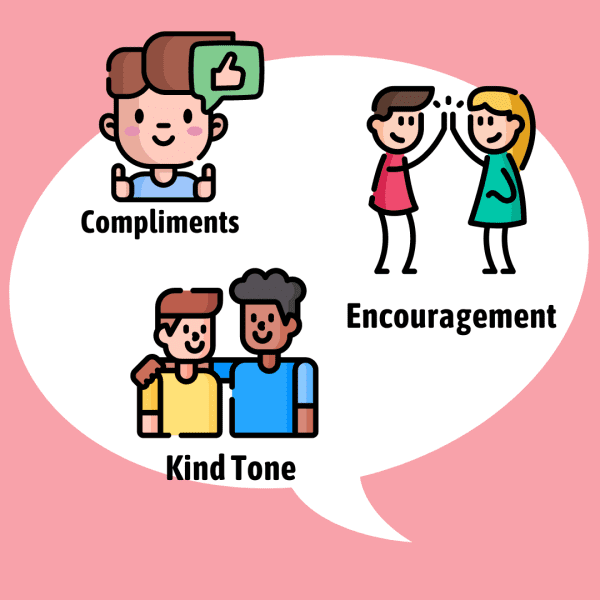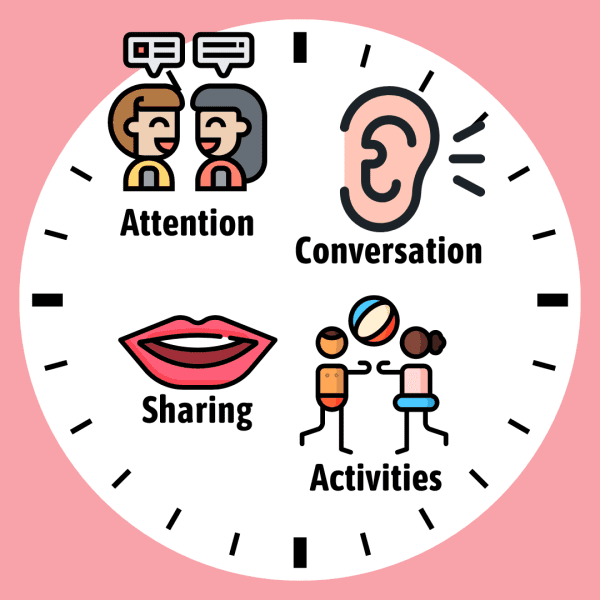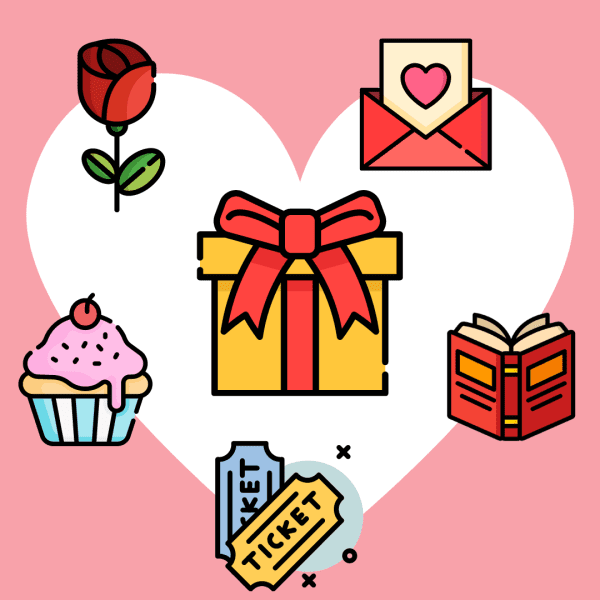If you want to enrich your relationship, “The 5 Love Languages” by Gary Chapman is a must-read. This bestselling book explains that people show and feel love in five main ways. By understanding these “love languages,” you can strengthen your connection with your partner.
The book has sold over 20 million copies and is used by therapists and counselors everywhere. Why is it so popular? Because it rejects one-size-fits-all relationship advice and instead teaches a personalized approach. It says the key to lasting love is to understand your partner deeply and show love in a way that uniquely resonates with them.
Another extraordinarily popular relationship book is Men Are From Mars, Women Are From Venus by John Gray. He echoes a similar message, saying, “You cannot, nor should you ever try to, change your partner. That is his or her job. Your job is to change the ways you communicate, react, and respond to your partner.”
Read more in Men Are From Mars, Women Are From Venus by John Gray
📖 Summary by Chapter: Every chapter of “The 5 Love Languages” explained in 5 minutes

First, you’ll get a quick overview of the key concepts and lessons you should know from each chapter of the book.
Chapter 1 Summary
- Why love fades after marriage: The author talks to a man on a plane who has had three failed marriages. The man asks why love seems to fade after marriage. The author explains that while there is plenty of relationship advice, it often misses a key point: people have five main love languages, or ways they feel loved.
- Speak their love language: To truly show love to your partner, you need to speak their specific love language. For example, the man on the plane gave his wife compliments, but she might have felt more loved if he had shown love through actions, which could be her primary love language.
Chapter 2 Summary
- Your inner love tank: Both children and adults have an inner “love tank” that needs to be filled regularly to feel secure and avoid emotional problems. For adults, falling in love fills this tank temporarily, but it needs continuous refilling. By learning and speaking each other’s love language, couples can keep their love tanks full and maintain a healthy, loving relationship.
Chapter 3 Summary
- Falling in love lasts 2 years: The intense and exciting feeling of falling in love typically lasts about two years. After that, people start to notice their partner’s flaws and may become annoyed.
- Three choices: misery, divorce, or choose to love: After marriage, couples face these three choices: stay unhappy, get divorced, or choose to work on loving each other. Real love is more than a feeling; it’s a conscious, daily choice. What we emotionally need most is not to fall in love, but to be truly loved by someone who chooses to love us because they see us worthy of love.
Chapter 4 Summary
- Language #1 is Words of Affirmation: This means using positive and loving words with your partner. Compliment their appearance, actions, and personality traits. Also, offer encouragement by expressing your belief in their abilities to achieve their goals and dreams.
- Forgiveness and Kind Tone: It’s important to speak kindly and gently. Avoid harsh or critical words, and communicate with empathy and understanding. Forgive past mistakes and don’t bring them up again. Make requests as an equal partner, not demands as a parent giving orders.
Chapter 5 Summary
- Language #2 is Quality Time: This means giving your partner focused attention through undistracted time together, engaging in quality conversations with active listening and empathy, and learning to share your own thoughts and feelings regularly to build intimacy.
- Quality Activities: Regularly organizing shared activities that your partner or you enjoys, such as small weekend trips or regular date nights. The main goal is to express love by spending time together; the activity itself is less important.
Chapter 6 Summary
- Language #3 is Receiving Gifts: Gift-giving is a universal part of human culture and marriage, serving as a visual symbol and reminder of love. Some couples stop giving gifts after marriage, making their partner feel unloved and different from when they were dating.
- Meaningful Gifts: Gifts don’t need to be expensive. If you partner’s love language is gifts, then even small, thoughtful items like handmade cards or notes will be highly appreciated. It’s also important to understand that for some, saving money feels emotionally secure, but giving gifts is not a waste but an investment in your partner’s emotional needs.
Chapter 7 Summary
- Language #4 is Acts of Service: This involves doing things for your partner that require time and effort, such as cooking, cleaning, and maintenance. For some of the author’s clients, it may require letting go of traditional stereotypes, like the idea that husbands don’t change diapers.
- Requests, Not Demands: Start by asking your partner for a list of four things they would appreciate you doing. Focus on requests like “Could you…” or “I would love it if you…” rather than criticism or demands. Acts of service are done as an act of love, not obligation.
One of the best books on effective and empathetic communication is “Nonviolent Communication.” It explains that when we judge or criticize others, we’re actually revealing our own unmet needs. For example, if our partner doesn’t give us enough attention, we might label them as “distant and uncaring.” If they give too much, we might see them as “needy and clingy.” These judgments are really the reflection our unmet needs. Their solution is to communicate our needs directly as requests, rather than using hurtful indirect strategies like judging, complaining, or analyzing the other person’s level of rightness or wrongness.
Chapter 8 Summary
- Language #5 is Physical Touch: It significantly affects people’s emotional well being, especially for those whose primary love language is touch. It is essential for a child to develop emotionally and crucial in romantic relationships. The importance of touch is underscored by the deep pain caused by infidelity.
- Everyday Touches: Small touches throughout the day, like holding hands, hugging, and sitting close together, are important. These gestures, along with more intimate acts like back rubs and sex, can communicate love more powerfully than words. Pay attention to your partner’s specific reactions to understand what they like.
Chapter 9 Summary
- 4 Ways to Know Your Love Language:
- What Hurts Most: Identify what hurts you most emotionally. If criticism hurts the most, your love language might be Words of Affirmation.
- Frequent Requests or Complaints: Notice what you often ask for or complain about. If you often ask your partner to do things, your love language might be Acts of Service.
- How You Show Love: Pay attention to how you express love to your partner, as it often reflects how you wish to receive love.
- Your Ideal Partner: Imagining your ideal partner can also reveal your love language.
Chapter 10 Summary
- Choosing Love: Being “in love” is a temporary, instinctual feeling. What lasts is the emotional need to be loved, which we can choose to fulfill for each other through our actions. We can do this even if their love language doesn’t come naturally to us. For example, the author vacuums his house regularly because it’s an act of love for his wife, even though he strongly dislikes doing this task.
Chapter 11 Summary
- Impact of Love Relationships: Our need for significance and security is deeply connected to our love relationships. When our partner speaks our love language, we feel valued and stable, providing a strong foundation to tackle other areas of life.
- Love Can Be Reborn: When a marriage is in crisis, it’s often because partners aren’t speaking each other’s love language. For example, a day of chores means less than 15 minutes of undivided attention if someone’s love language is quality time.
Chapter 12 Summary
- Love Someone You Hate?: Ann wanted to leave her marriage but also wanted to save it due to her faith. She asked if she could love her husband despite hating him because of hurtful words and neglect. The author said it would be very difficult, but possible to give her marriage one last chance by following the Christian teaching to “love your enemies.”
- Ann’s 6-Month Experiment: She was advised to be kind and loving for six months, focusing on her husband’s love languages—physical touch and words of affirmation—by giving him regular sex and praise without complaints. She also asked her husband for monthly feedback and suggestions. Finally, she began making her own requests for quality time, which her husband provided. Eventually, they fell deeply in love again.
Chapter 13 Summary
- In the final chapter, the author shares his experience of rediscovering faith in Jesus Christ, which gives him strength to continue loving in difficult times. On a more general note, he gives us a final challenge to find our partner’s love language and speak it consistently, then see what happens.
What do we emotionally need most, according to The 5 Love Languages?
To experience falling in love
To be loved by someone who chooses us
To receive constant praise and affirmation
To find someone we don't argue with
Now, let’s move on to a deep dive into the best practical ideas and key takeaways in this book…
💬 1. Words of Affirmation: The power of kind words that compliment, encourage, and support your partner

Words of affirmation is about showing love through words. When someone has this love language, you can significantly improve your relationship with them through compliments that appreciate their positive traits, offering encouragement with supportive words, and speaking with a kind and gentle tone.
One of the most effective ways to communicate love is through words of affirmation. Let’s break down the 3 major ways we can communicate with this love language:
- Compliments: A simple, genuine compliment can go a long way in making your partner feel loved and appreciated. Whether it’s praising their appearance, acknowledging their efforts, or highlighting their positive traits, compliments are powerful tools in building a positive atmosphere in your relationship. For instance, instead of nagging about a task left undone, we can praise little things our partner does well, and this usually encourages them to be more responsive to future requests.
- Encouragement: Encouragement involves inspiring your partner to reach their full potential by believing in their abilities and supporting their dreams. This requires empathy and understanding of what matters to them. By sharing honest praise and expressing belief in their potential for success, we can help our partner overcome their fears and more likely achieve their goals.
- Kind Tone: The way we say things often matters more than the words themselves. Speaking with a kind and gentle tone, even during disagreements, can prevent conflicts from escalating. It’s about choosing forgiveness over keeping score of past mistakes. When you respond to your partner’s anger with understanding rather than counterattacking, you pave the way for healing and intimacy.
If you believe that your partner’s love language is words of affirmation, try keeping a notebook where you jot down things you appreciate about them and share these regularly.
Another very popular relationship book for married couples is “Love and Respect” by Emerson Eggerichs. The main idea is that marriage problems occur when a wife doesn’t feel loved and a husband doesn’t feel respected.
For a wife, feeling loved means being cared for as the top priority in her husband’s life. For a husband, feeling respected means being trusted and looked up to, despite both partners being equal. That book says, “When he honors her as first in importance and she respects him as first among equals, their marriage works.”
Read our summary of Love and Respect (coming in the future)
What is the most common cause of a harsh and unkind tone in a relationship?
Stress from work
Differences in personality
Miscommunication
Lack of true forgiveness
⏰ 2. Quality Time: The importance of giving undivided attention and having meaningful conversations

Quality time means giving your partner undivided attention, engaging in meaningful conversations, sharing your own thoughts and feelings, and participating in activities together to strengthen your bond.
When your partner’s love language is quality time, there are four major ways you can help them feel loved:
- Give them your full, undivided attention. It’s about putting away distractions like the TV, smartphones and social media and really being present in the moment. For example, walking together while talking without distractions or sharing a meal while looking into each others eyes can make your partner feel truly valued and loved.
- Quality Conversation. Engaging in quality conversations is another key aspect of quality time. This involves actively listening, showing empathy, and trying to understand your partner’s thoughts, feelings, and desires. We should remember when our partner shares their stressful day with us, they usually don’t want practical advice to solve a problem, but to feel heard and supported.
- Self-Sharing. While listening is critical, quality time also includes sharing your own thoughts and feelings. Some people, and more often men, may need to learn to open up and reveal themselves to build intimacy. Keeping a notepad of daily events how you felt about them can help, with a goal of sharing at least three things each day with your partner.
- Quality Activities. Participating in activities your partner enjoys is another important element. Whether it’s small weekend trips or regular date nights, the focus is really on spending time together, not just the activity itself. The main goal is to express love by being together and doing something at least one of you loves, creating shared experiences that strengthen your bond.
One of the world’s leading experts on marriage is Dr. John Gottman, famous for his ability to predict divorce with over 90% accuracy based on his studies of couples’ interactions. In his recent book “Eight Dates: Essential Conversations For a Lifetime of Love,” Dr. Gottman emphasizes the importance of spending quality time. He wrote, “Make dedicated, nonnegotiable time for each other a priority, and never stop being curious about your partner.”
Read our summary of Eight Dates (coming in the future)
What is the primary goal of engaging in quality activities with your partner?
To make your partner feel provided for
To have exciting shared experiences
To deepen love by spending time together
To avoid feeling bored by keeping busy
🎁 3. Receiving Gifts: Material things can powerfully communicate our immaterial love and affection

Another primary love language is receiving gifts, which are tangible symbols of love. They don’t need to be expensive; even small, thoughtful gifts can make a big difference, especially for those whose primary love language is receiving gifts.
Gifts are important in showing love and affection in all cultures. They serve as visual symbols of love. For example, wedding bands symbolize the bond of marriage, while not wearing them can indicate a troubled marriage.
For some people, receiving gifts is a primary love language, meaning that thoughtful presents, no matter how small, make them feel valued and appreciated. It’s important to note that gifts don’t need to be expensive. A handmade card or a simple note can be incredibly meaningful. The key is the thought and effort behind the gift, making it a physical manifestation of your love for them.
If you are a saver who finds emotional security in saving money, try to shift your perspective. View regular gifts as an essential investment in your partner’s emotional needs and well-being.
A common mistake couples make is stopping gift-giving after marriage, which can make a partner feel neglected and unloved. Consider a couple from Chicago: the wife felt their marriage was empty. After attending a seminar, the husband realized her love language was receiving gifts and he never gave her gifts, not even a card on holidays. He started with a single rose, then a pizza, a potted plant, and eventually planned date nights. This small change transformed their relationship, and they became closer than ever.
Why might a partner feel neglected if they stop receiving gifts after marriage?
Gifts are visual symbols of love
Lack of gifts means neglect
Their partner no longer values them
They love receiving expensive items
🧹 4. Acts of Service: Showing love by doing things for your partner that require time and effort

Acts of service involve completing practical tasks for your partner that require time and effort, like cooking, cleaning, maintaining the car, paying the bills, etc. If you want acts of service from your partner, it’s better to make respectful requests rather than speaking with complaints and criticism.
Some people’s primary love language is acts of service, which means they feel most loved seeing their partner actively doing something for them. These tasks can range from cooking and cleaning to maintenance and helping with daily chores.
It’s important to let go of old stereotypes, such as the belief that certain chores are only for one gender. For instance, in a story from North Carolina, a young couple learned to share responsibilities equally, with the husband starting to change diapers and vacuuming the home, which greatly improved their relationship.
Sometimes, people put in a lot of effort but focus on the wrong tasks, missing the mark on what their partner truly needs. To effectively use acts of service as a love language, start by asking your partner for a list of four things you could do that would make them feel loved.
If you would like an act of service from your partner, make requests rather than demands. Demanding or criticizing can make your partner feel pressured and resentful, and they are less likely to respond positively. Instead, use gentle and positive language that acknowledges their choice. For example, say, “I would really appreciate it if you…” or “I would love it if you…” to make your request.
Here’s a great quote from the related self-help book The Four Agreements: “Real love is accepting other people the way they are without trying to change them.” This aligns perfectly with the idea of making respectful requests, which demonstrate that we accept our partner’s autonomy and value their choices. By doing so, we create a loving environment where acts of service are freely given out of love rather than obligation.
What is the best way to communicate needs for acts of service to your partner?
Using polite requests
Providing detailed instructions
Making strong demands
Offering incentives
✋ 5. Physical Touch: Expressing love through small touches, physical closeness, and intimacy

Physical touch is crucial for romantic relationships, especially when your partner’s primary love language is touch. Small touches throughout the day can deeply express love and provide emotional security. These include: holding hands, hugging, sitting close together, back rubs, and intimate moments.
Physical touch is an essential part of expressing love and building emotional connections. Beginning from a young age, children need physical comfort for healthy development, emotionally and socially. Later in life, it becomes an essential part of romantic relationships, especially for those who feel most loved through touch.
In romantic relationships, physical touch ranges from small, everyday gestures to more intimate moments. Simple acts like holding hands while walking, hugging from behind while cooking, or placing a hand on your partner’s back can communicate a deep sense of love and connection. These small touches throughout the day reassure your partner of your presence and affection.
One powerful aspect of physical touch is its ability to convey love and support without words. For example, holding your partner while they cry can offer more comfort and emotional connection than any verbal reassurance. It’s about being present and offering a physical reminder of your love and support.
It’s also important to pay attention to your partner’s specific reactions to different types of touch. Everyone has unique preferences, and understanding what kinds of touch your partner likes can enhance your connection. Some might prefer gentle touches like hand-holding and hugs, while others may feel most loved through more intimate gestures like back rubs or physical closeness during conversations.
What is the primary reason physical touch is important in relationships?
It strengthens emotional bonds
It improves communication skills
It helps resolve conflicts
It fulfills needs for intimacy
- Discover your partner’s love language: Notice how they show love to you, what they ask for frequently, and what hurts them most. These will all provide important clues. You can also ask directly what their ideal partner would be like.
- Give daily compliments: Start each day by complimenting your partner’s appearance, actions, or traits. (Words of Affirmation)
- Have daily conversations: Set aside 15 minutes each day to talk with your partner about their day. (Quality Time)
- Give small tokens: Regularly gift small, meaningful items like a favorite snack or a flower. (Receiving Gifts)
- Help with chores: Take over a household chore your partner usually does. (Acts of Service)
- Show daily affection: Incorporate small touches like holding hands or hugging each day. (Physical Touch)




























Community Notes